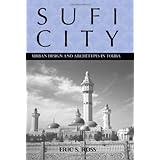
Average Reviews:

(More customer reviews)This book represents a major contribution to the literature on Sufism in an African context. It addresses how the Murid movement interacted with modernity, Islam, Sufism and African traditions to create a world-accepting synthesis that finds physical form in the modern city of Touba -- an autonomous part of Senegal. I read this book early on, and I assure all readers that it is worth the investment and that it is one of those rare books that is hard to put down once one starts to read it.
Click Here to see more reviews about: Sufi City: Urban Design and Archetypes in Touba (Rochester Studies in African History and the Diaspora)
Sufi City: Urban Design and Archetypes in Touba is a geographical study of the modern Muslim holy city of Touba in Senegal, capital of the Mouride Sufi order. Touba was founded in 1887 by a Sufi shaykh in a moment of mystic illumination. Since the death of the founder in 1927, the Mouride order has designed and built the entire city. Touba is named for Tûbâ, the "Tree of Paradise" of Islamic tradition. This archetypal tree articulates Islamic conceptions of righteous life on earth, divine judgment, and access to the Hereafter; the city of Touba actualizes this spiritual construct. Important aspects of its configuration, such as the vertical and horizontal alignment of its monumental central shrine complex, its radiating avenues and encircling ring roads, and the actual trees that mark its landscape relate directly to the archetypal tree of Sufi theosophy. The relationship between the spiritual archetype and its earthly actualization as a city is explained by recourse to Sufi methodology. The book employs a semiotic analysis of urban form, cartography, hermeneutics, field investigation and analysis of satellite imagery in order to relate contemporary urban design issues to overarching metaphysical concepts. Sufi City also explores the history of urban networks in Senegal since the emergence of autonomous Muslim towns in the seventeenth century. Finally, the layout of Senegal's modern Sufi cities is related to the monumental palaver trees that marked that country's historic settlements.Eric S. Ross is a cultural and urban geographer who holds a degree in Islamic Studies. Since 1998 he has been assistant professor of Geography at Al Akhawayn University in Ifrane, Morocco. Apart from research on Sufi orders and Muslim towns in Senegal, he has studied cultural tourism and urban planning in Morocco.

No comments:
Post a Comment